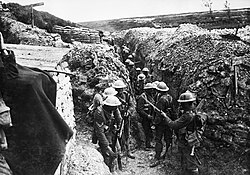Reception
Tolkien and the Great War

Luke Shelton, editor of Mallorn , the journal of the Tolkien Society, called Tolkien and the Great War an excellent book on how the First World War might have shaped Tolkien's thought. [3] The Tolkien scholar Janet Brennan Croft, reviewing the same book for World Literature Today, wrote that Garth had ably portrayed Tolkien's early life with his close friends, using their own papers and their British Army company records. She found the first part of the book "somewhat leisurely", but the account of Tolkien's training and battlefield experience was "gripping". [4] Garth's biography of Tolkien in his war years influenced much Tolkien scholarship in the subsequent decades. By 2021, a reviewer was able to state that each of the 16 essays in a scholarly collection was responding to "Garth's seminal [work]". [5]
Tolkien at Exeter College
The Tolkien scholar Michael Foster, reviewing Tolkien at Exeter College for Mythlore , described it as "a very good thing indeed", even if small (at 64 pages), with "rare photographs" that revealed "a time of innocence, a time of confidences", and serving as a kind of prequel to Tolkien and the Great War. [6]
The Worlds of J.R.R. Tolkien

Reviewing The Worlds of J.R.R. Tolkien: The Places that Inspired Middle-earth for Mythlore, Foster described the book as a "masterful study ... encyclopedic in its scope", combining details of Tolkien's life with Middle-earth. He admired the photographs as well as their scholarship and found "virtue" in the journalistic use of sidebars on background topics like Tolkien's debt to Anglo-Saxon cosmology or his mythology for England. He quotes Garth's account of the impact of Tolkien's "many trips to the trenches" in 1916, passing a crossroads where "a calvary had once stood .. at a tree-girt crossroads that the soldiers called Crucifix Corner. Similarly, en route to Mordor, Frodo and Sam see the old stone king at the Crossroads in Ithilien—his head knocked off by orcs yet still whole." Foster comments that "Thus the Somme was reborn as the most horrific geography of Middle-earth. It inspired the Dead Marshes, the Barrow-downs, and Morgul Vale." [8]
